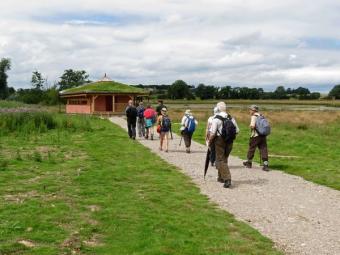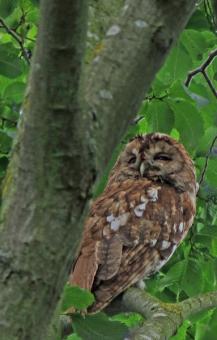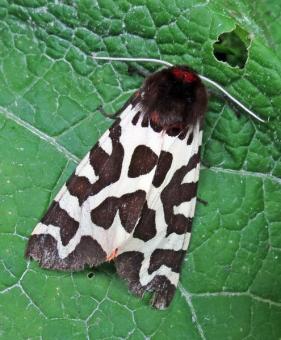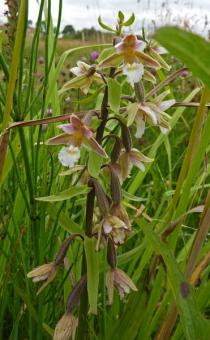 Heading For The Plush HideStaveley YWT nature reserve is a wetland reserve located near Boroughbridge NE of Harrogate. The reserve is in a worked-out gravel pit part of a much larger area known as Staveley Carrs which was famed during the nineteenth century for its rare marsh plants. The YWT has recently added to the reserve through the purchase of adjacent land and a worked-out gravel pit. Considerable work has been undertaken to make the reserve accessible to the public including the construction of a gravel path around the reserve and lakes.
What to wear?! This was the dilemma facing us as we prepared for our visit. We had experienced continuous rain although a warm and dry day was predicted. Carl Watts, the Community Outreach Officer whom we met in the new car park, gave us some guidance and an introduction to the reserve. Carl proved to be a man of great knowledge, enthusiasm and energy.
Heading For The Plush HideStaveley YWT nature reserve is a wetland reserve located near Boroughbridge NE of Harrogate. The reserve is in a worked-out gravel pit part of a much larger area known as Staveley Carrs which was famed during the nineteenth century for its rare marsh plants. The YWT has recently added to the reserve through the purchase of adjacent land and a worked-out gravel pit. Considerable work has been undertaken to make the reserve accessible to the public including the construction of a gravel path around the reserve and lakes.
What to wear?! This was the dilemma facing us as we prepared for our visit. We had experienced continuous rain although a warm and dry day was predicted. Carl Watts, the Community Outreach Officer whom we met in the new car park, gave us some guidance and an introduction to the reserve. Carl proved to be a man of great knowledge, enthusiasm and energy.  Tawny OwlHe would be with us for the morning only so was anxious to show us the hot spots of the reserve. We began our tour in the field adjacent to the car park where a thriving community orchard had been planted - a flock of Hebridean sheep were quietly grazing while a newly-built pond was attracting several dragonflies. We "raced"along the path with views of the marsh and lake into the woodland. We were delighted with the sighting of a female tawny owl sitting on a branch high up in a tree. Carl explained that the white-letter hairstreak butterfly had been seen in the canopy on elm. In the shade on ground level several broad-leaved helleborines were spotted. We were led (on the proviso that we took great care as to where we put our feet ) into the wet meadow bordering the lake where we were delighted to see fragrant orchid as well as common spotted, bee and pyramidal orchids. Moths, butterflies and dragonflies were flying around. The next hot spot visited was a grassy bank bordering a small copse with several fruit trees to look for the brown argus butterfly associated with cut-leaved cranesbill. The flower was seen but not the butterfly.
Tawny OwlHe would be with us for the morning only so was anxious to show us the hot spots of the reserve. We began our tour in the field adjacent to the car park where a thriving community orchard had been planted - a flock of Hebridean sheep were quietly grazing while a newly-built pond was attracting several dragonflies. We "raced"along the path with views of the marsh and lake into the woodland. We were delighted with the sighting of a female tawny owl sitting on a branch high up in a tree. Carl explained that the white-letter hairstreak butterfly had been seen in the canopy on elm. In the shade on ground level several broad-leaved helleborines were spotted. We were led (on the proviso that we took great care as to where we put our feet ) into the wet meadow bordering the lake where we were delighted to see fragrant orchid as well as common spotted, bee and pyramidal orchids. Moths, butterflies and dragonflies were flying around. The next hot spot visited was a grassy bank bordering a small copse with several fruit trees to look for the brown argus butterfly associated with cut-leaved cranesbill. The flower was seen but not the butterfly.  Garden Tiger MothWe looked over an area of disturbed ground (the White Horse of Kilburn was seen in the distance) which was to be made into a hay meadow. Lunch was taken in the superb newly-opened octagonal straw bale hide overlooking the reedbeds and lake. Carl said adieu and was thanked by the group. After lunch we went our separate ways in small groups to explore the reserve further. Some went to view the marsh helleborine and dragonfly ponds while others took a circular tour of the lake side. At the present time it is somewhat lacking in interesting floral species but there were lots of dragonflies and butterflies feeding off the balsam. Numerous birds were seen in the reeds and on the lake.
Over 30 bird species were recorded . As well as the tawny owl the following were recorded by the group;
Garden Tiger MothWe looked over an area of disturbed ground (the White Horse of Kilburn was seen in the distance) which was to be made into a hay meadow. Lunch was taken in the superb newly-opened octagonal straw bale hide overlooking the reedbeds and lake. Carl said adieu and was thanked by the group. After lunch we went our separate ways in small groups to explore the reserve further. Some went to view the marsh helleborine and dragonfly ponds while others took a circular tour of the lake side. At the present time it is somewhat lacking in interesting floral species but there were lots of dragonflies and butterflies feeding off the balsam. Numerous birds were seen in the reeds and on the lake.
Over 30 bird species were recorded . As well as the tawny owl the following were recorded by the group;  Marsh Helleborinebuzzard, greylag goose, canada goose, common tern, reed bunting, sedge warbler, goldfinch, whitethroat and heron. Dragonfly species were numerous.and included common darter, black-tailed skimmer, brown hawker, broad-bodied chaser and southern hawker. The damsel flies seen were common blue, blue tailed and emerald. Butterfly species (not a good year for butterflies) were small skipper, ringlet, meadow brown, green-veined white and tortoiseshell. Floral species included marsh helleborine, black horehound, great lettuce, fragrant orchid, pyramidal orchid, bee orchid, common spotted orchid, broad-leaved helleborine, brookweed, cut-leaved cranesbill, slender St John's wort, marsh woundwort, and field scabious. On our return to the mini bus we were somewhat surprised that a small number of our party had deserted to a local hostelrie and would be awaiting the arrival of the minibus. 14 of us enjoyed an excellent day out. Summer has arrived at last!
Marsh Helleborinebuzzard, greylag goose, canada goose, common tern, reed bunting, sedge warbler, goldfinch, whitethroat and heron. Dragonfly species were numerous.and included common darter, black-tailed skimmer, brown hawker, broad-bodied chaser and southern hawker. The damsel flies seen were common blue, blue tailed and emerald. Butterfly species (not a good year for butterflies) were small skipper, ringlet, meadow brown, green-veined white and tortoiseshell. Floral species included marsh helleborine, black horehound, great lettuce, fragrant orchid, pyramidal orchid, bee orchid, common spotted orchid, broad-leaved helleborine, brookweed, cut-leaved cranesbill, slender St John's wort, marsh woundwort, and field scabious. On our return to the mini bus we were somewhat surprised that a small number of our party had deserted to a local hostelrie and would be awaiting the arrival of the minibus. 14 of us enjoyed an excellent day out. Summer has arrived at last!Margaret
